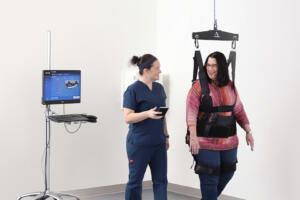Roger Domis is a man on the move. As the patriarch of a blended family of six adult children and 11 grandchildren, he and his wife Patricia spend many afternoons at football, baseball, and soccer games and dance recitals. So, when Roger developed yet another severe kidney infection, he wanted to feel better quickly—for good.
Roger, 69, was diagnosed with kidney cancer in April 2016 after he noticed blood in his urine. He chose to have surgery in Philadelphia to remove the affected kidney and ureter, and a stent was put in to help restore urine flow from his remaining kidney to the ureters, the long, narrow tubes that carry urine from the kidneys to the bladder.
Unfortunately, Roger experienced ongoing complications and stent-related infections, even lapsing into kidney failure several times. He underwent several emergency surgeries to replace infected stents and remove scar tissue. In January 2018, he was blindsided by another serious infection when scar tissue blocked the ureter in his left kidney.
“I didn’t have any pain, but I had a high fever, weakness, and terrible chills,” says Roger, a Freehold resident who works at a local car dealership. “I was tired of dealing with kidney problems every few months.”
 After he received intravenous antibiotics for 20 days at the Jean Mehr Infusion Therapy Center at CentraState, Roger wanted a long-term solution. He discussed his options with Troy Sukkarieh, MD, a board-certified urologist on staff at CentraState. In February, Roger had kidney reconstruction surgery. During the complex procedure, Dr. Sukkarieh used the da Vinci Xi® Surgical System—the latest robotic technology available—to remove the scar tissue, reconstruct the blocked ureter using part of Roger’s bladder, and restore urine flow. Then, the stent was permanently removed.
After he received intravenous antibiotics for 20 days at the Jean Mehr Infusion Therapy Center at CentraState, Roger wanted a long-term solution. He discussed his options with Troy Sukkarieh, MD, a board-certified urologist on staff at CentraState. In February, Roger had kidney reconstruction surgery. During the complex procedure, Dr. Sukkarieh used the da Vinci Xi® Surgical System—the latest robotic technology available—to remove the scar tissue, reconstruct the blocked ureter using part of Roger’s bladder, and restore urine flow. Then, the stent was permanently removed.
“I was nervous about having another surgery, but Dr. Sukkarieh’s confidence put me at ease,” Roger says.
Robotic Surgery Shortens Recovery Time
With robot-assisted surgery, surgeons have the control, range of motion, and visibility of open surgery, but can work through smaller incisions. This means that patients typically experience less blood loss, pain, and scarring, fewer infections and complications, and a faster recovery time.
“The da Vinci Xi® is a multi-quadrant system, which means that I was able to work in both the pelvic area and abdomen at the same time during Roger’s surgery,” explains Dr. Sukkarieh. “After years of complications, his kidney function has been restored permanently, without a stent.”
Roger was discharged the next day with six small incisions on his stomach and a catheter to empty his bladder, and he felt well enough to go out to dinner with his family. The catheter was removed a week later. Now, he is back on the sidelines, cheering on his grandchildren.
“It’s amazing what they can do with the surgical robot,” says Roger. “I had been suffering for years, but now I feel great.”
For more information about robotic surgery, call 866-CENTRA7 (866-236-8727).





